ADVERTISEMENT
Deesha Thosar MLB Writer NEW YORK — Shohei Ohtani is about to take his biggest step forward in his ongoing rehab from elbow surgery. The Los Angeles Dodgers two-way superstar is set to face major-league hitters on Saturday during a live batting practice session at Citi Field, manager Dave Roberts announced on Friday. It will […]
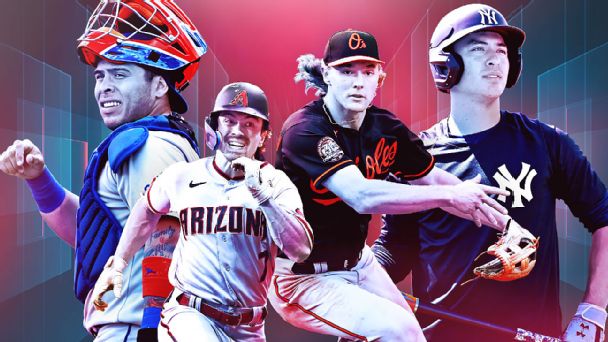
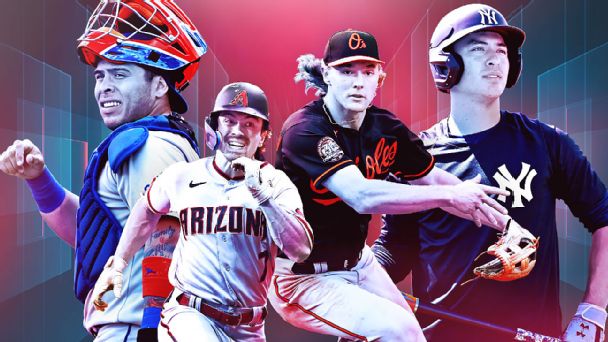
MLB Writer
NEW YORK — Shohei Ohtani is about to take his biggest step forward in his ongoing rehab from elbow surgery.
The Los Angeles Dodgers two-way superstar is set to face major-league hitters on Saturday during a live batting practice session at Citi Field, manager Dave Roberts announced on Friday. It will be his first time facing hitters since his September 2023 elbow reconstruction surgery.
“We’ve seen the bullpens for quite some time,” Roberts said Friday in the visitor’s dugout at Citi Field. “So to see him go out there and face some major-league hitters, we’re all anxious for that.”
The Dodgers were adamant that they would not clear Ohtani to face hitters until he threw his entire arsenal during a bullpen. So once he mixed in sliders and curveballs in his latest session on Wednesday, everyone involved in Ohtani’s ramp-up, including his doctors, felt comfortable that he was ready to move on to the next, and biggest, hurdle in his pitching progression. The Dodgers have been intentionally slow with Ohtani’s throwing build-up after he underwent surgery to repair a torn labrum on his non-pitching left shoulder last November.
As of Friday evening, it was unclear which Dodgers hitters Ohtani will face on Saturday. In terms of how excited or nervous Ohtani is feeling about his latest obstacle, the Japanese phenom went through his usual pregame routine ahead of the Dodgers’ series opener against the Mets on Friday.
ADVERTISEMENT
“He doesn’t tip his hand very often as far as emotions,” Roberts said.
This will be the first time Ohtani will take the mound and pitch to major-league hitters since signing a 10-year, $700 million contract with the Dodgers in December 2023. An exact return date has not been set for Ohtani, but he’s expected to join the Dodgers rotation sometime after the All-Star break. There is an obvious need for Ohtani’s arm in Los Angeles’ depleted pitching staff, but the club has no intention of rushing his ramp-up to help make the rotation whole again.
While so much about Ohtani’s progression remains unknown, one thing is certain: Ohtani will not go on a minor-league rehab assignment. That step is common for pitchers rehabbing from elbow reconstruction surgery. But Ohtani’s bat is too important to the reigning champions to take him off the roster unless it’s absolutely necessary. Ohtani entered Friday tied for the major-league lead in home runs with 17.
“Obviously the build-up is important,” Roberts said. “But so is him taking five at-bats in a game.”
As exciting as Ohtani’s next step is for the Dodgers, there is reason for apprehension over the next couple of months.
The Dodgers are aware that Ohtani’s increased activity and pitching workload could adversely affect his offense. Last week, Ohtani threw a 50-pitch bullpen session, which included an up-down, and then he went 0-for-6 at the plate against the Los Angeles Angels. That 0-for could’ve been coincidental, but Roberts supported the idea that “it’s certainly possible” Ohtani’s pitching progression could impact his hitting.
The Dodgers will depend on Ohtani to tell them when or if he needs a day off from being their designated hitter as his build-up continues. It’s possible, Roberts said, if he’s taxed from pitching a bullpen session or a simulated game sometime over the next several weeks, that he won’t be in the lineup that day. The Dodgers will be open to how Ohtani is feeling, and play his availability by ear.
“I don’t think anyone knows how the next couple of months will look,” Roberts said.
For now, though, the organization is eager to see how his stuff will play against major-league hitters.
”I think he’s calibrating really well,” Roberts said. “The stuff looks good. I mean, it’s easy 94, 95 [mph] coming out of his hand. It’s a really good throw. I think we’re all anxious to see how it looks to hitters.”
Deesha Thosar covers Major League Baseball as a reporter and columnist for FOX Sports. Follow her on X at @DeeshaThosar.
recommended

Get more from Major League Baseball Follow your favorites to get information about games, news and more
CLEMSON — When it comes to the new revenue sharing piece, plus giving more student-athletes fully funded scholarships, Clemson is all-in. Clemson athletic director Graham Neff told Mickey Plyler recently on the Mickey Plyler Show on The Roar 105.5 FM, that Clemson will fund 150 new scholarships for the 2025-’26 academic year. “That is $4-6 […]

CLEMSON — When it comes to the new revenue sharing piece, plus giving more student-athletes fully funded scholarships, Clemson is all-in.
Clemson athletic director Graham Neff told Mickey Plyler recently on the Mickey Plyler Show on The Roar 105.5 FM, that Clemson will fund 150 new scholarships for the 2025-’26 academic year.
“That is $4-6 million that are all supported through IPTAY, (in addition to) the maximum revenue distribution,” Neff said. “So, schools that are able to pull all of those levels, like we are, that is where the support, the resources and the competitive expectations we have for that are significant.”
Clemson Athletics is at the top of the pyramid when it comes to the amount of dollars a school can lean in, especially when it comes to the scholarship piece.
“We are increasing scholarships for all 21 of our sports and, essentially, fully fund new scholarships for most all of our sports,” Neff said. “Really rowing and track and field are the two programs that will not be fully funded (in scholarships), but those are huge roster sports. Rowing has 50 and track and field has 90 between men and women, but both of those programs will essentially have increased scholarships.
“All of our other sports will be fully funded for scholarships, that means baseball, softball, lacrosse and soccer, all of them.”
Neff pointed out, being able to fully fund scholarships in all but two programs is a big deal and gives Clemson a competitive advantage in a lot of ways to its peers.
“That is a huge deal, and we are leaning into that significantly,” he said. “There are not a whole lot of schools that are able to do that, so that is a testament and leverage from IPTAY and our IPTAY donors.
“We will continue to ask for support in a very traditional manner with IPTAY, scholarships and academic support.”
Though Clemson will distribute the maximum $20.5 million to its student athletes this year, in accordance with the House Settlement, Neff explained that the sports that brought in the revenue are the ones that will mostly benefit from it.
“We are all-in to the full amount and now its about how we are going to (distribute) that, and that gets into a local decision of how you allocate that $20 million,” he said. “You can allocate it all to one sport. You can chop it up.
“Our method is to align it where our revenues are generated from. Obviously, here at Clemson, it is heavily football, basketball and baseball. These (sports) are where our revenue is generated from, so the allocation of that $20 million is going to be proportional to where we generate our revenue.”
Taking it one layer deeper, the individual programs will then decide how much the student athletes get from their particular sport.
“Now we get into our coaches and our support staff to ultimately allocate those dollars per team,” Neff said. “So, we have central administrative support mechanisms, analytics and positional values (to help).
“We really equipped our coaches in football and all of them with resources and strategy around them. That is where you get into the professionalism of college athletics more and more, but that layered approach is where we are seeing those results in recruiting and retention.”
Australia’s track stars made their presence known at the 50th edition of the Prefontaine Classic, as Olympic silver medallist Jessica Hull a New South Wales Institute of Sport (NSWIS) scholarship athlete, led the charge with a podium finish in the fastest 1500m ever run, while four fellow Australians stepped up against world-class fields in Eugene’s […]

Australia’s track stars made their presence known at the 50th edition of the Prefontaine Classic, as Olympic silver medallist Jessica Hull a New South Wales Institute of Sport (NSWIS) scholarship athlete, led the charge with a podium finish in the fastest 1500m ever run, while four fellow Australians stepped up against world-class fields in Eugene’s iconic Diamond League meet.
In a race destined for the history books, Hull rose to the moment, clocking 3:52.67 to finish third in the Women’s 1500m for the third fastest time of her career.
Competing in what became the fastest women’s 1500m race in history with the deepest field assembled this year, Hull held her composure as Kenya’s Faith Kipyegon stormed to a new world record of 3:48.68. Hull refused to be rattled by the searing pace, staying attached to the lead group deep into the bell, before yielding only to Kipyegon and Ethiopia’s Diribie Welteji in the final 200m.
The result not only marked Hull’s quickest performance of the season, but it reinforced her place on the podium of global middle-distance running.
“I was actually quite surprised how easily I got my position. To get the position right off the line was super nice, and then I just tried to stay relaxed. Then I felt Faith, she put her foot down and made it really hard for that last 500m,” Hull said.
“This was the fastest 1500m I’ve been in all year, so it was definitely tough in that last 400m, but I’m okay with that being tough at this point of the season. It was really important to get a really fast one under my belt and build from here. I
“t’s pretty impressive what Faith can do, she’s set the benchmark now of where we need to be come Tokyo, so yeah, I’ll go back to work and try and get there.”
Nineteen-year-old sensation Cameron Myers (ACT) continued to defy expectations at the Bowerman Mile, clocking 3:47.50 to finish sixth in a stacked field, and falling just 0.02-seconds shy of breaking his own World Under 20 and Australian record.
Mixing it with global medallists and Diamond League champions, the Canberran ran with poise beyond his years, as USA’s Yared Nuguse took charge of the race before being pipped at the finish line by The Netherland’s Niels Laros who stole victory from the Olympic bronze medallist with a national record of 3:45.94.
For the equal Australian record holder Oliver Hoare (NSWIS), it was a tougher outing in Eugene, with the Commonwealth champion finishing 15th in 3:51.60. Also racing the mile, albeit in a different race and a different field in the pre-event program, Adam Spencer (VIC) placed fourth in a field of 16, running a lifetime best of 3:50.19, missing the Tokyo qualifying standard by 0.19-seconds.
Returning to the track from injury, Australia’s fastest man Lachlan Kennedy (QLD) seized his moment in the Men’s 100m, racing to 10.07 (+0.4) to finish seventh in one of the fastest fields assembled this season.
Lining up against the world’s premier sprinters including first and second-place getters Kishane Thompson (JAM, 9.85) and Zharnel Hughes (GBR, 9.91), the Australian held his own, crossing the line just behind world champion Christian Coleman (USA, 10.06).
The performance adds to a breakthrough year for Kennedy, who continues to rise among sprinting’s elite ahead of the Tokyo World Championships.
The Diamond League Series continues next week in Monaco, France on July 11, with an all-star Australian cast set to line up for the prestigious meet.
Hull will return for the 1000m alongside Sarah Billings, while teenager Gout Gout will make his Diamond League debut in the Under 23 200m, and Peter Bol and Kurtis Marschall will wave the Australian flag in the 800m and Pole Vault respectively.
“I Felt the Cheers: The Remarkable Silent Life of Curtis Pride,” by Curtis Pride with Doug Ward, Kensington Books, 226 pages It was just another late season Major League Baseball game in Montreal in 1993 when Expos rookie Curtis Pride delivered the first hit of his career. The fans, as is custom, stood and applauded […]
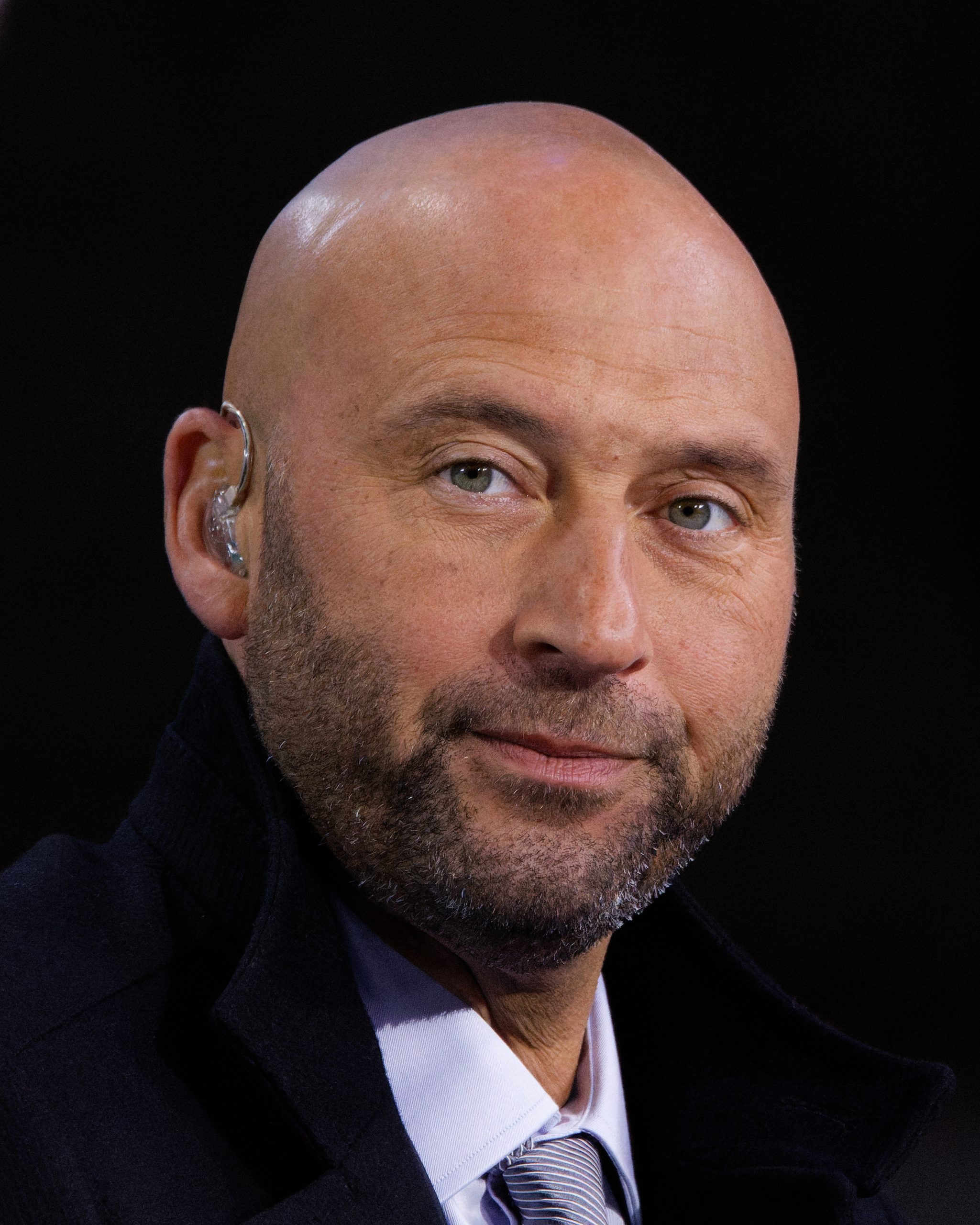

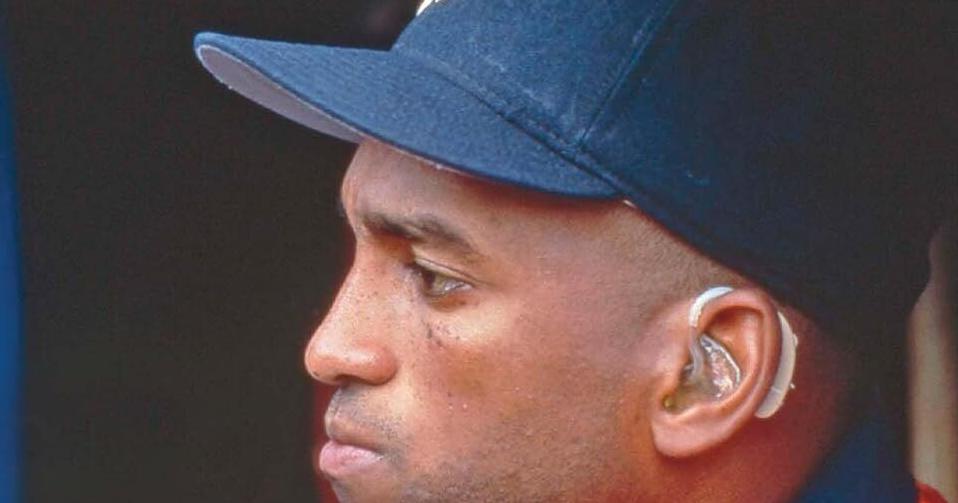
“I Felt the Cheers: The Remarkable Silent Life of Curtis Pride,” by Curtis Pride with Doug Ward, Kensington Books, 226 pages
It was just another late season Major League Baseball game in Montreal in 1993 when Expos rookie Curtis Pride delivered the first hit of his career.
The fans, as is custom, stood and applauded the feat. Pride, after all, came off the bench to double in two runs in the eighth inning to cut the visiting team’s lead that night to one.
But on this night, the fans kept cheering. And they got loud.
By then, fans were aware of Pride, who was born deaf. He was three days removed from becoming the first deaf player to reach the majors in nearly 50 years. The Phillies then brought in a new pitcher, but the roar of the 45,000 that night in Montreal — yes, Montreal — only grew.
Pride stood on second base and had no idea how loud it was. Third base coach Jerry Manuel came out and advised him to tip his helmet to acknowledge the crowd, so he did.
But they kept cheering.
“I still didn’t notice,” Pride said.
It wasn’t until an umpire advised him to smile that he realized the gravity of the situation. The moment serves as a focal point in his recently released autobiography, “I Felt the Cheers: The Remarkable Silent Life of Curtis Pride.”
He describes in detail how that moment validated his years of hard work in the minor leagues, the odds he overcame being deaf and all the people who helped him along the way. Pride might be most known for being a deaf baseball player, but there was so much more to his career than that game.
While he was never an everyday player, he had several notable accomplishments that are chronicled in the book — like the time he hit a pinch-hit home run in his first game with the Boston Red Sox or when he homered in his first game as a New York Yankee. Former professional baseball pitcher Greg Maddux credits Pride — who mastered lip-reading as a child — for the trend of pitchers and catchers covering their mouths during meetings on the mound to keep their conversations private.
Pride’s book is also a testament to the power of humans helping other humans. He identifies those who played a significant role in his development, starting with his parents, his first little league coach and a minor league manager who was there that night in Montreal.
Pride, who spent years as head baseball coach at Gallaudet University after a 22-year pro career, spoke with the newspaper about his book.
The interview was conducted using a program that provides closed captioning. It has been edited for clarity.
It’s been about 20 years since you retired from baseball. What led you to write a book at this point?
When I was playing professional baseball, I had a lot of people coming up to me asking if I had a book. It was interesting to them how I dealt with my deafness. Toward the end of my career, more people — people from the deaf community, teammates and coaches — asked me.
So I thought it was a good time to share my life journey with the public and hopefully inspire them.
Take me back to that night in Montreal. That was before the internet, but now the video of it has taken on a life of its own. Do you still get people asking you about it?
It was very emotional and very surreal. It’s something I will never, ever forget. I had a lot of people come up to me after the game. I would walk in downtown Montreal, and people would come up to me and say it was an experience they’ll never forget. To this day people still talk about how it made a huge impact on their lives.
Watch the video of Pride’s first hit by clicking here.
As a hearing person, I was unaware that deaf people often deal with a misconception that they are not smart. You talk about dealing with that over your career. Can you tell me more about that?
It’s a common misconception. William “Dummy” Hoy was the first deaf player in the major leagues, and he was called Dummy because people thought he was dumb just because he couldn’t hear.
I would have to constantly prove to people that just because I have a hearing loss doesn’t mean I’m not smart. I had a good GPA in high school and graduated from one of the top colleges in the country, William & Mary.
You reference by name the people who were instrumental in your development, but the biggest I thought were your parents. How much impact did they have on your career?
My mom sacrificed her nursing career to raise me and make sure I had all the resources necessary to become a productive person in society. My dad has been a big advocate, always helping me make sure I knew what was going on. My dad wanted to sign me up for T-ball, but they wouldn’t let me play because I was deaf and Black.
My dad threatened to file a legal suit. My dad has been with me making sure I understand the rules of the game and there was no miscommunication between the coaches and me.
For years I considered you a baseball journeyman, someone who sought out teams to play for. But now I think you were a journeyman because teams sought you out. How would you analyze your career?
It’s a tough business. To be able to come back from independent ball to the major leagues, that’s an incredible feat. When you go to the independent leagues, most people write you off, especially the age I was then.
I was looking ahead, doing my thing, staying positive and playing the game the right way at all times. I’ve had coaches tell me, “Man, I love the way you play. You play the game hard and the right way.” So I guess I set a good example.
BlockDAG becomes the Official Blockchain Partner of Major League Rugby champions Seattle Seawolves, introducing NFTs, fan tokens, & digital content to deepen engagement. BlockDAG’s rapid ascent in 2025 is now extending beyond crypto circles into mainstream sports, as demonstrated by its latest move. The Seattle Seawolves, one of Major League Rugby’s top franchises, have partnered […]

BlockDAG’s rapid ascent in 2025 is now extending beyond crypto circles into mainstream sports, as demonstrated by its latest move. The Seattle Seawolves, one of Major League Rugby’s top franchises, have partnered with BlockDAG as their Official Blockchain Partner for the 2025 season. This collaboration blends Web3 utility with sports loyalty, forming a strategic alliance aimed at enhancing fan engagement through blockchain.
Founded in 2017, the Seattle Seawolves are two-time MLR champions and founding members of the league. Known for their competitive consistency and a strong local following, the team embodies values like discipline and resilience, which closely align with BlockDAG’s emphasis on infrastructure and user-focused growth in the crypto space.
But this isn’t just a branding play. The partnership introduces a new model where blockchain becomes a direct part of how fans interact with their favorite team, bringing functionality and digital ownership into the foreground.
A central element of the partnership is the introduction of blockchain-enabled fan assets, including NFTs and fan tokens. These tools offer more than novelty; they’re built to serve as access points to exclusive features.
Fans will be able to collect, trade, and interact with digital memorabilia, vote in polls, and unlock unique team experiences. Imagine owning a pivotal match-winning try in digital form, or gaining access to exclusive sessions with players through token-based participation. These mechanisms place fans at the center of the team’s digital strategy in a practical and rewarding way.

Nicolaas van den Bergh, Chief Marketing Officer at BlockDAG, shared:
“This partnership will enable us to redefine fan experiences, fostering deeper connections built on trust, creativity, and interactive digital engagement.”
Beyond asset ownership, the partnership will include a monthly co-branded content series across the Seawolves’ digital platforms. This ongoing series will include highlights, fan-driven segments, interviews, and community polls, all crafted to drive active fan participation.
In addition, content created by players will offer behind-the-scenes access that adds context and personal depth. From pre-game preparation to off-field moments, fans will gain a closer, more authentic view of team life.

This approach reflects BlockDAG’s broader principles; decentralization isn’t limited to tech architecture. It extends to how audiences are included, heard, and engaged through interactive digital channels.
Shane Skinner, CEO of the Seattle Seawolves, emphasized the importance of the partnership:
“We are thrilled to partner with a leading blockchain innovator like BlockDAG to deliver immersive, digital-first experiences to our passionate fanbase.”
This collaboration represents more than surface-level innovation. It points to how the Seawolves plan to grow their digital identity while offering fans more meaningful engagement. For BlockDAG, it’s a calculated entry point into a trusted, established sports environment with a dedicated audience.
With over 200,000 BDAG holders and $329 million raised during its crypto presale, BlockDAG is moving beyond core infrastructure and into broader cultural territory, where branding, trust, and public presence matter just as much as code and scalability.
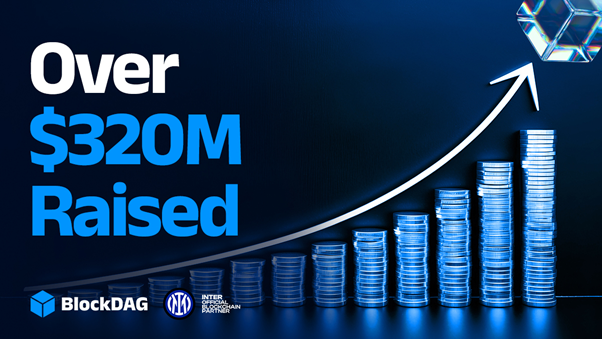
This move comes alongside a second July sports partnership with the Seattle Orcas of Major League Cricket. Together, these collaborations signal BlockDAG’s commitment to tapping into both domestic and global audiences, from rugby enthusiasts to cricket’s massive 2.5 billion fan base.
The partnership between BlockDAG and the Seattle Seawolves isn’t just a media announcement; it’s a case study in how Web3 can integrate into everyday culture. Sports connect people emotionally. They create rituals, memories, and identity. Now, thanks to blockchain, those elements can also be digital, verifiable, and participatory.
As BlockDAG’s GLOBAL LAUNCH release approaches on August 11 and BDAG coins continue to be sold at $0.0016 until that date, the project is clearly steering beyond traditional crypto boundaries. Stadiums, fans, and athletes are becoming part of its long-term growth narrative.
For the Seawolves community, this is a chance to be part of a new era of engagement. For the wider blockchain space, it’s a clear message: BlockDAG is not only building infrastructure, it’s shaping how crypto connects with real-world culture.

Presale: https://purchase.blockdag.network
Website: https://blockdag.network
Telegram: https://t.me/blockDAGnetworkOfficial
Discord: https://discord.gg/Q7BxghMVyu
BlockDAG
BDAG
It may not carry the “Beautiful Game” label like football, but waterpolo brings its own brand of raw drama – as Saturday’s gripping clashes between Sirens and San Ġiljan, and derby rivals Sliema and Neptunes, clearly showed. Saturday’s action-packed fixtures at Tal‑Qroqq delivered a double dose of waterpolo excitement. In one corner, Sirens put everything […]

It may not carry the “Beautiful Game” label like football, but waterpolo brings its own brand of raw drama – as Saturday’s gripping clashes between Sirens and San Ġiljan, and derby rivals Sliema and Neptunes, clearly showed.
Saturday’s action-packed fixtures at Tal‑Qroqq delivered a double dose of waterpolo excitement.
In one corner, Sirens put everything on the line against powerhouse San Ġiljan in a gripping encounter; in the other, long-time rivals Sliema and Neptunes engaged in another fierce derby that swung back and forth.
Both matches showcased the sport’s signature blend of intensity, tactical flair, and nail-biting drama – proof that waterpolo has a spectacle all its own.
Saturday’s duel between Sirens and San Ġiljan fitted the bill perfectly.
It had been a truly balanced contest, with the team from St Paul’s Bay only a whisker away from pulling off a shock win.
In a match that kept fans on the edge of their seats, Sirens came agonisingly close to pulling off a shock result against San Ġiljan.
The match swung like a pendulum, and though Sirens eventually fell short, their performance after a heavy defeat to Neptunes deserves plaudits.
It was end-to-end excitement with two missed man-ups from Sirens resulting in the fall off of Ranko Perovic’s side.
The Northenders were left chasing the game early on, undone by a disastrous second session that saw them slip to a 7-2 half-time deficit after initially falling 4-0 behind.
Nicolas Bicari has been pivotal when scoring four goals in the late sessions.
San Ġiljan capitalised through Aaron Younger’s hat-trick, two of which came from five-metre throws.
Nikolai Zammit also netted a vital brace, striking just as Sirens looked to rally from 3-0 down, ending the first session at 3-2.
Zammit’s goals steadied the ship for the Saints, but Sirens roared back in the third session. A blistering 5-1 stretch began with two stunning goals from Kydon Agius, the second of which saw him pirouette past his marker before slotting past goalkeeper Jake Tanti.
The comeback brought the score to 8-7 entering the final quarter.
Bicari’s equaliser made it 8-8 early in the fourth session, setting up a grandstand finish.
Tully and Younger then restored San Ġiljan’s lead – though the latter’s goal came from a debatable penalty – only for Gianni Farrugia to bring Sirens back into contention once again.
In the dying moments, Isaiah Riolo’s powerful effort struck the post, dashing Sirens’ hopes of a famous win.
Having just beaten Neptunes, more was expected from San Ġiljan – but they’ll feel relieved to have escaped with the points.
In the second match, Sliema came out firing in the opening session, racing to a 3-0 lead that reflected their early sharpness.
Liam Galea opened the scoring with a beautifully executed backhand, setting the tone for the Blues.
With his team rattled, Neptunes coach Aleksandar Ćirić called an early time-out in a bid to restore composure – and it paid off.
Neptunes responded immediately, clawing their way back into the match as Stevie Camilleri struck twice early in the second session to swing the momentum and give the Reds a 4-3 lead.
What followed was a tense, end-to-end battle.
Each time Neptunes edged ahead, Sliema found a reply – until Angelos Vlachopoulos fired home to give Sliema a narrow 7-6 advantage at the halfway mark.
The third session continued in the same vein, with Neptunes again chasing the game.
Alec Fenech brought them level at 7-7, but quickfire goals from Galea and Jayden Cassar saw Sliema open up a two-goal cushion.
The Reds, however, refused to back down. Gergo Zalánki and Julian Valletta kept them in touching distance before Jordan Camilleri brought the sides level again at 10-10.
Ben Cachia capitalised on a man-up situation to restore Sliema’s lead at 11-10, but Stevie Camilleri responded instantly.
Then, just before the buzzer, Jordan Camilleri struck once more to give Neptunes a 12-11 lead going into the final quarter.
With just one goal separating the sides, the stage was set for a dramatic final act.
Neptunes extended their lead through Gergo Zalánki.
However, a lightning counter-attack sprung directly from the goalkeeper’s hand allowed Ben Cachia to cut the deficit to 12–13.
Liam Galea then restored parity with a thunderous nine‑metre strike.
The lead swung again when teenage sensation Sam Engerer rose above the pack to make it 14-13 for Sliema.
Neptunes answered through Gialanze, but Sliema were determined not to be denied.
In a dramatic finale, Dino Zammit showcased his composure and technique, lobbing a delicate ball over Marco Rossi as the buzzer sounded.
It was an unforgettable climax to an extraordinary match.
RESULTS
TA’ XBIEX AMIGOS 10
MARSAXLOKK MFF LTD 21
(0-4, 1-6, 5-7, 4-4)
TA’ XBIEX: T. Schembri, J. Farrugia, A. Camenzuli, L. Grech Carr 1, T.J. Mifsud, M. Manara, F. Scardino, R. Pelicaric 6, N. Bonavia, J. Culic 1, Z. Bartolo, A. Formosa, A. Theuma, S. Van Wyk 2.
MARSAXLOKK: M. Farrugia, M. Lanzon 1, N. Bogdanovic 6, A. Aquilina 1, R. Spiteri 2, L. Brownrigg, S. Mifsud, J. Pawley, R. Galea 3, J. Borg Tabone 4, A. Fava 1, A. Cook 3, J. Micallef, B. Lewis.
SIRENS 10
SAN ĠILJAN 11
(2-3, 0-4, 5-1, 3-3)
SIRENS: J. Parnis, P. Serracino, N. Bicari 4, P. Borg 1, J. Cachia 1, K. Agius 2, M. Ortoleva, I. Riolo , J. Zerafa Gregory, M. Sciberras , N. Rafailovic, G. Farrugia 1, M. Bonello Dupius, G. Pace.
SAN ĠILJAN: J. Tanti, D. Bugeja, D. Tully 1, R. Caruana, A. Younger 3, M. Zammit 2, J. Bonavia 1 , B. Plumpton 1, J. Abela 1 , N. Zammit 2, D. Zammit , N. Schiavone, Z. Attard, G. Bonavia.
Refs : A. Rondoni, R. Spiteri.
NEPTUNES 14
SLIEMA 15
(2-3, 4-4, 6-4,2-3)
NEPTUNES: M. Castillo, S. Gialanze 3, G. Zalanki 3, L. Mallia , J. Camilleri 3, J. Valletta 1, S. Camilleri 3, M.Castillo , B. Schranz, J. Bajada , A. Fenech 1, M. Azzopardi, M. Rossi, E. Mallia.
SLIEMA: N.Grixti, E. Schembri , L. Galea 3, J. Gambin 1, J. Cassar 2, B. Cachia 3, J. Cutajar, D. Rizzo 1, J. Chircop, A. Galea, A. Vlachopulos 2, D. Zammit 2, B. Busuttil, S. Engerer 1
Refs: Marco Piano, Massimo Angilleri.


WAC to Rebrand to UAC, Add Five New Members in 2026


Polar is teasing a Whoop alternative without subscription


Why Cosmetics are Making Up for Lost Time in Women’s Sports


I loved the Whoop MG, but didn’t love the price: that’s why I’m excited about this mysterious new fitness band from a major Garmin rival


Go Straight to Collective Bargaining (Part II) ✦ OnLabor


Alex Pereira responds to rumors of UFC heavyweight title fight with threatening message


Locked On Women's Basketball
Women's Basketball Thanks Shannon LeBeauf for 14 Seasons


Alabama Basketball


Kyrie Irving's Mental Health Message